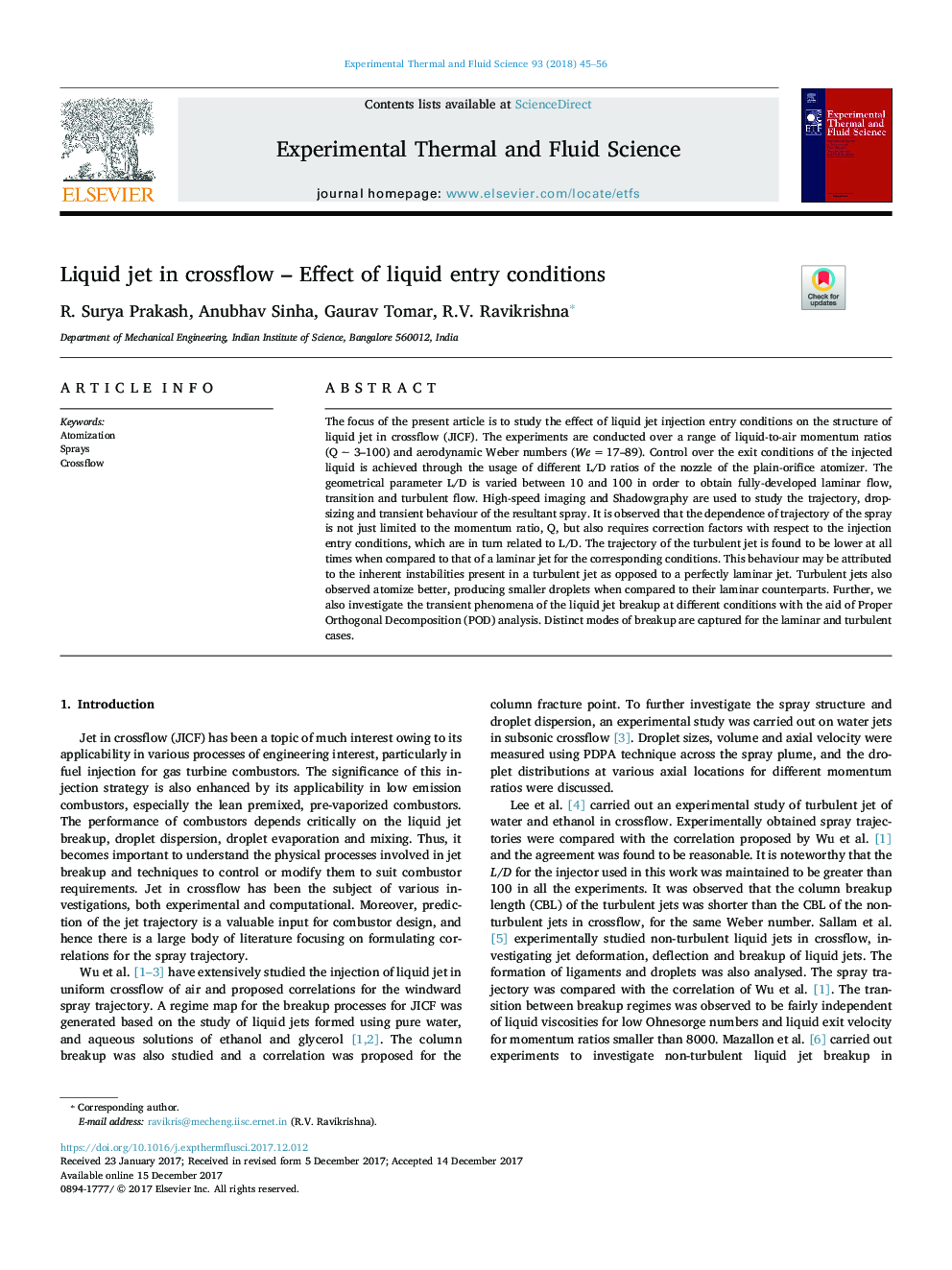| Article ID | Journal | Published Year | Pages | File Type |
|---|---|---|---|---|
| 7051777 | Experimental Thermal and Fluid Science | 2018 | 12 Pages |
Abstract
The focus of the present article is to study the effect of liquid jet injection entry conditions on the structure of liquid jet in crossflow (JICF). The experiments are conducted over a range of liquid-to-air momentum ratios (Qâ¯â¼â¯3-100) and aerodynamic Weber numbers (Weâ¯=â¯17-89). Control over the exit conditions of the injected liquid is achieved through the usage of different L/D ratios of the nozzle of the plain-orifice atomizer. The geometrical parameter L/D is varied between 10 and 100 in order to obtain fully-developed laminar flow, transition and turbulent flow. High-speed imaging and Shadowgraphy are used to study the trajectory, drop-sizing and transient behaviour of the resultant spray. It is observed that the dependence of trajectory of the spray is not just limited to the momentum ratio, Q, but also requires correction factors with respect to the injection entry conditions, which are in turn related to L/D. The trajectory of the turbulent jet is found to be lower at all times when compared to that of a laminar jet for the corresponding conditions. This behaviour may be attributed to the inherent instabilities present in a turbulent jet as opposed to a perfectly laminar jet. Turbulent jets also observed atomize better, producing smaller droplets when compared to their laminar counterparts. Further, we also investigate the transient phenomena of the liquid jet breakup at different conditions with the aid of Proper Orthogonal Decomposition (POD) analysis. Distinct modes of breakup are captured for the laminar and turbulent cases.
Keywords
Related Topics
Physical Sciences and Engineering
Chemical Engineering
Fluid Flow and Transfer Processes
Authors
R. Surya Prakash, Anubhav Sinha, Gaurav Tomar, R.V. Ravikrishna,
